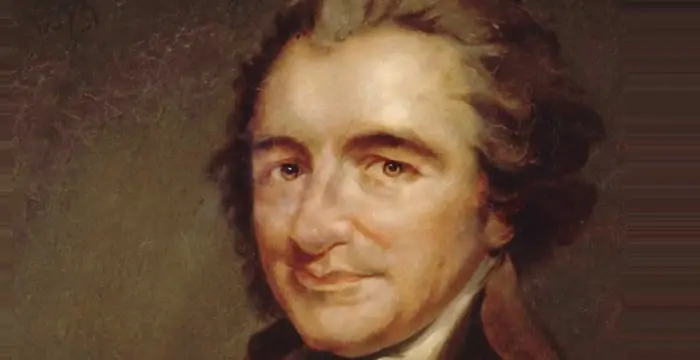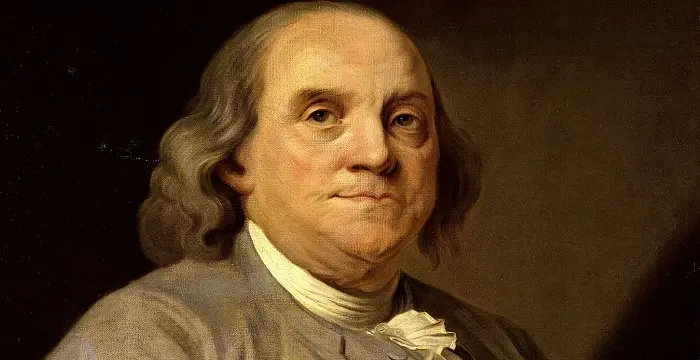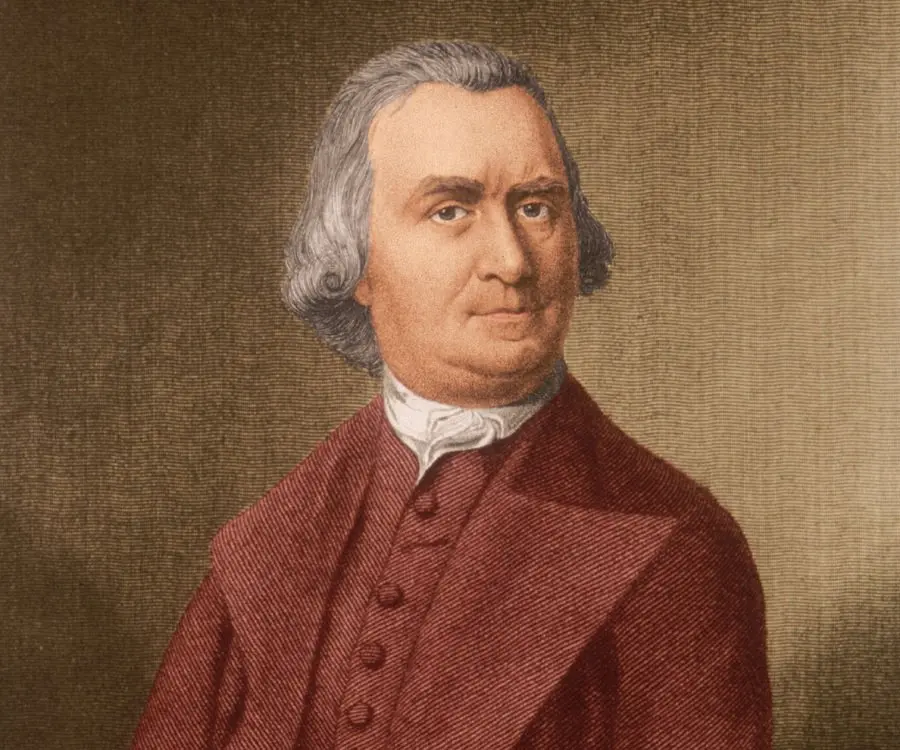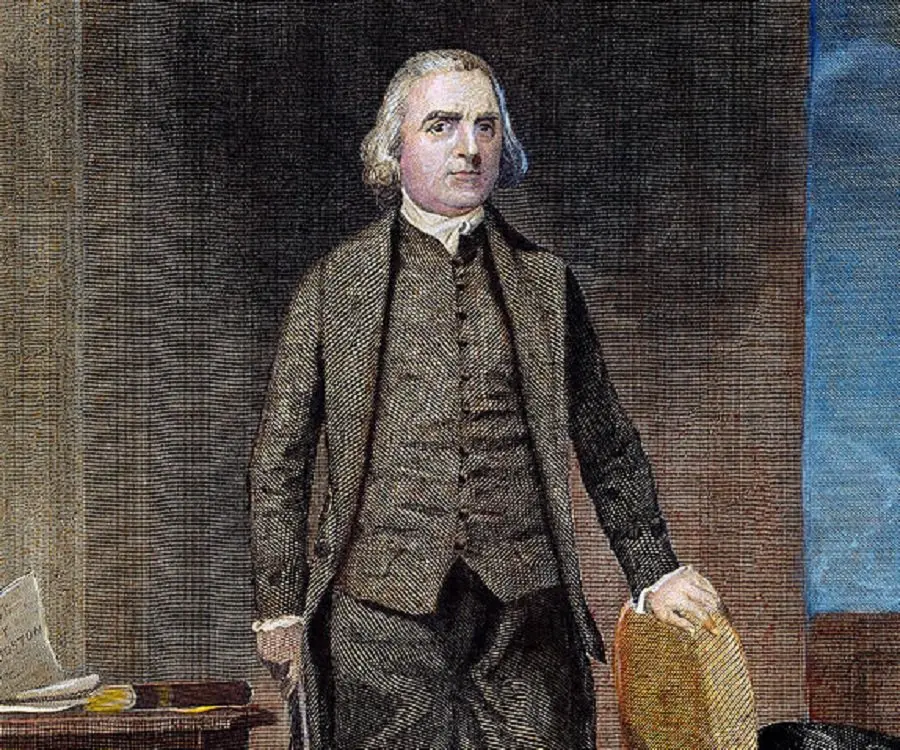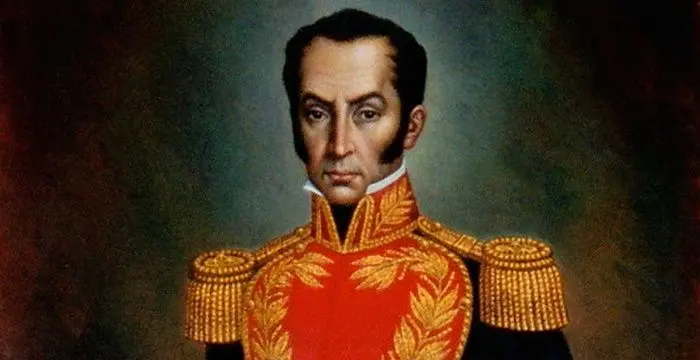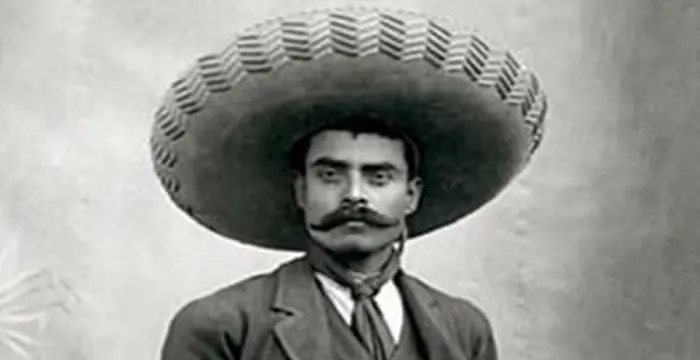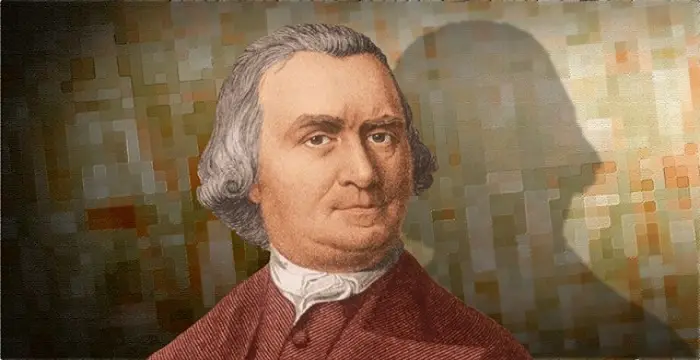
Samuel Adams - Founding Father of the United States, Birthday and Childhood
Samuel Adams's Personal Details
Samuel Adams was one of the Founding Fathers of the United States
| Information | Detail |
|---|---|
| Birthday | September 27, 1722 |
| Died on | October 2, 1803 |
| Nationality | American |
| Famous | Leaders, Revolutionaries, Founding Father of the United States |
| City/State | Boston, Massachusetts |
| Spouses | Elizabeth Checkley |
| Childrens | Hannah, Samuel |
| Universities |
|
| Birth Place | Boston, Massachusetts, United States |
| Political Ideology | Democratic-Republican Party |
| Gender | Male |
| Father | Samuel Adams Sr. |
| Mother | Mary Adams |
| Sun Sign | Libra |
| Born in | Boston, Massachusetts, United States |
| Famous as | Founding Father of the United States |
| Died at Age | 81 |
// Famous Founding Father of the United States
Thomas Paine
Thomas Paine was a famous writer, political activist and revolutionary. Go through this biography to learn more about his profile, childhood, life and timeline.
Benjamin Franklin
One of the founding fathers of the USA, Benjamin Franklin was a multi-talented personality. He was a scientist, inventor, author, musician and a statesman. Check out this biography for detailed information on his life.
Samuel Adams's photo
Who is Samuel Adams?
Samuel Adams, one of the Founding Fathers of the United States, was born in the eighteenth century in Boston, Massachusetts, then a part of the British Colony. The son of an influential member of the Boston Caucus, he became interested in politics during his student days at Harvard. After graduation, he tried to go into a number of professions, but each of them failed due to his involvement in politics. Attaining his first political appointment at the age of twenty-four, he entered the Boston Caucus upon his father’s death a couple of years later. Gradually, as Britain enacted a number of acts that went against the interest of the colonists, he started a movement that later evolved into the American Revolution, paving the way for the country’s independence. Later he contributed significantly to the formation of the American republicanism and was instrumental in the inclusion of the bill of rights into the new constitution. After his death, the members of Massachusetts as well as the federal legislatures wore mourning bands in his honor for the rest of the year.
// Famous Revolutionaries
Tecumseh
Tecumseh was a Native American leader of the Shawnee clan. This biography profiles his childhood, life and timeline.
Simon Bolivar
Simón Bolívar was a Venezuelan military leader who was instrumental in independence of several Latin American countries from the Spanish rule. This biography profiles his childhood, life, achievements and timeline.
Emiliano Zapata
Emiliano Zapata was a Mexican revolutionary leader and one of the most important figures of the Mexican Revolution.Check out this biography to know about his childhood, family life, achievements and other facts about his life.
Childhood & Early Life
Samuel Adams was born on September 16, 1722 (Old Style date) in Boston, at that time a part of the British Colony of Massachusetts. According to the new style dating system, his date of birth falls on 27 September of the same year.
His father, Samuel Adams Sr., was a Deacon in the Congregational Church. A leading member of the Boston Caucus, he was also a prosperous merchant and owned a malt-house. In 1739, he promoted Land Bank, which introduced paper money instead of gold and silver, thus helping to solve the ongoing currency crisis.
His mother, Mary (nee Fifield) Adams, was a deeply religious woman and a devout Puritan. The couple had three surviving children. Brought up in seclusion, they were instilled with a sense of personal responsibility. All his life, Samuel remained true to his Puritan heritage.
Young Samuel had his early education at the Boston Latin School. On graduating from there in 1736, he entered Harvard College to be trained as a minister; but very soon his interest began to shift towards politics.
In 1740, he graduated from Harvard, winning a class debate on liberty and then enrolled at the same institution for his master’s degree. In the same year, his father’s Land Bank was dissolved by the British Parliament on the urging of the Court Party, made up of aristocrats.
The promoters of the bank, which included his father, became liable for the currency still in circulation. Consequently, their family estate began to dwindle and they became almost bankrupt. Even after his father’s death, the court cases went on, constantly reminding young Samuel of Britain’s arbitrary power over her colonies.
In 1743, Adams was awarded his master’s degree for his thesis ‘Whether It Be Lawful to Resist the Supreme Magistrate, If the Commonwealth Cannot Be Otherwise Preserved’. Thereafter, he briefly studied law and then gave it up to start his political career.
Entering Politics
Samuel Adams’ first job was at a counting house. But he lost it within a few months because its owner, Thomas Cushing II, found him to be more interested in politics than in business.
His father then lent him £1,000 to start his own business. He promptly gave away half of it to his friend and frittered away the other half. As a result, his venture failed and his debts were paid by his father, who then employed him as the manager of the family malt-house.
It was of mutual benefit and gave both the father and son more time for their political activities. Subsequently, in 1746, young Adams entered the provincial assembly with the support of the Boston Caucus. It was his first political appointment.
In January 1748, inflamed by British impressments, Adams, Gamaliel Rogers and Daniel Fowle launched a weekly newspaper called ‘The Independent Advertiser’. It was purely a political paper and Adams wrote most of the articles. Although it had very few readers, it ran till it was closed down by the British in 1775.
Although he was officially in charge of the family business, he paid little attention to it, taking more interest in politics. In 1756, he was elected to the post of tax collector by the Caucus-dominated Boston Town Meeting.
Adams was miserably ill-fitted for such a profession. Very often he failed to collect taxes and by 1765, the accumulated tax arrears reached £8,000, which could not be collected despite court cases. At the same time, it made him very popular among those citizens of Boston who did not pay.
Emergence As Mass Leader
In 1764, the British Parliament enacted the Sugar Law to tide over its financial crisis. Adams saw it as an infringement of colonial rights and questioned the authority of the British Parliament to collect taxes from America.
His standpoint was approved by the Boston Town Meeting on May 24, 1764. It thus became the first political body to declare that Britain could not legally tax the citizens of America, since they were not represented in the British Parliament.
Adams now started working with James Otis Jr., another champion for colonial rights. In the mean time, on March 22, 1765, the Stamp Act, which imposed tax on printed materials in British colonies, was passed by the British Parliament, generating huge uproar in America.
The colonists responded by calling for ‘Stamp Act Congress’. Adams also began to prepare for a massive public resistance, mobilizing both the merchant elite and general public. Very soon he was looked upon as the leader of the resistance.
In September 1765, Adams was elected to the assembly and in the May 1766 election, his Popular Party took over its control. Adams was now elected its clerk. He used his position to drive home the point that regional assemblies were not under British Parliament.
Their agitation compelled the British authorities to repeal the Stamp Act, but in 1767, they passed the Townsend Act, which imposed new duties on goods important into colonies, such as tea, glass, paint, paper, etc. The news reached Boston in October 1767 and Adams called for economic boycott.
In February 1768, Adams and Otis wrote a circular letter, later known as ‘Massachusetts Circular Letter’, arguing against the Townsend Act. Very soon, other towns started joining their boycott. To control the situation, British Governor Francis Bernard, dissolved the Massachusetts Assembly and called in the military.
Giving up hope of any reconciliation, Adams now began to work secretly for independence. From October 13, 1768 to August 1, 1769, a series of newspaper articles, entitled ’Journal of Occurrences’, started appearing in the ‘New York Journal,’ chronicling the brutality by the British Army at Boston.
Although authorship of these articles was anonymous it is believed that they were mostly written by Adams. They built up the sentiments against British occupation, forcing Bernard to leave Boston.
When on March 5, 1770, the Boston Massacre took place, Adams intensified his agitation. In April, the Townshend Act was repealed; only the tax on tea remained. Adams tried to impress upon others that even such a small amount of tax may act as a precedent in taxing colonies, but failed
Slowly, merchants began to lift boycott of imported goods and effectively defeated Adams’ campaign. Although he was reelected to the Massachusetts Assembly in April 1772, he got fewer votes.
Struggle for Independence
In 1772, Samuel Adams learned that the Governor and other senior officers, who were so far paid by Massachusetts House of Representative, would henceforth be paid by British government. He feared that such a policy had been designed to make these officials accountable only to the British government.
In November, Adams, along with other leaders, formed Committee of Correspondence to protest these developments as well as to keep a tab on British activities. It was followed by other states. Later, these committees became effective tools in America’s fight against British imperialism.
The Committee of Correspondence at Boston also played another vital part, which hastened the War of Independence. To protest the 1773 Tea Act passed by the British Government and to force the teas consignees to resign, they stormed three tea ships harbored at Boston and poured the consignments into the sea.
Although Adams did not take part in the storming of the ships, he played a vital part in organizing the event, which later became famous as the Boston Tea Party. When the British government responded with several coercive acts, he played a leading role in resisting them.
When the First Continental Congress was held in September 1774 in Philadelphia, Adams was chosen as one of the delegates. On returning in November, he became a member of the Massachusetts Provincial Government and started taking an active role in the preparation of the upcoming Revolution.
In 1775, Adams was a delegate to the Second Continental Congress. Since it worked under secrecy rule, not much is known about Adams’ activities during this period. But working behind the scenes, he was able to provide a major influence during the American Revolution, serving in various military committees.
He was also one of the important signatories of the United States Declaration of Independence, signed on July 4, 1776. In the following year, he was appointed to the Board of War and there too he played a major role.
Later Years
In 1779, Samuel Adams returned to Massachusetts and helped in drafting the Massachusetts Constitution. But he continued to remain active in federal politics until 1781, in which year he resigned from the Continental Congress, returning permanently to Boston.
During this period, he yielded great influence on local politics, often serving as the moderator of the Boston Town Meeting. Some time now, he was also elected to the state senate, very often serving as its president. When the national parties were formed, he joined the Democratic Republican Party.
At the same time, he was worried about the federal structure of the country. To rectify the strong federal trend in the new constitution, he contested in the United States House of Representatives in December 1788.
Although he lost the election, he continued to work for amendments to the Constitution, which in 1791 led to the inclusion of a Bill of Rights in the constitution. Meanwhile in 1789, he was made the lieutenant governor of Massachusetts, a post he held until 1793.
Next from 1794 to 1797, he was made the governor of the state. At the end of the term, he declined reelection and retired into private life.
Personal Life & Legacy
In October 1749, Samuel Adams married Elizabeth nee Checkley, the daughter of the New South pastor. The couple had six children, out of which four died in infancy. His wife died soon after giving birth to a stillborn child in 1757.
Among his surviving children was his eldest and only surviving son, Samuel Adams Jr. A surgeon in the War of Independence, he fell ill during the war and died from it on January 17, 1788 while his father was attending a convention for ratification of the new constitution.
In 1764, Adams married Elizabeth nee Wells. The couple did not have any children.
Towards the end of his life Adams suffered from a tremor which made him incapable of writing. He died on October 2, 1803 at the age of 81 and was interred at the Granary Burying Ground in Boston.
On his death, he was eulogized as the "Father of the American Revolution" by Boston’s Republican newspaper, the ‘Independent Chronicle of Boston.’
Trivia
At Harvard, Samuel was ranked fifth in a class of twenty-two; but that was because at that time, the class rank was determined by the social standing of the family, not by the academic acumen of the student.
// Famous Leaders
Edi Rama
Edi Rama is the current Prime Minister of Albania. Check out this biography to know about his childhood, life, achievements, works & timeline.
Tecumseh
Tecumseh was a Native American leader of the Shawnee clan. This biography profiles his childhood, life and timeline.
Khalifa bin Zayed Al Nahyan
Sheikh Khalifa bin Zayed Al Nahyan is the current President of the United Arab Emirates (UAE). Check out this biography to know about his birthday, childhood, family life, achievements and fun facts about him.
Samuel Adams biography timelines
- // 16th Sep 1722Samuel Adams was born on September 16, 1722 (Old Style date) in Boston, at that time a part of the British Colony of Massachusetts. According to the new style dating system, his date of birth falls on 27 September of the same year.
- // 1736Young Samuel had his early education at the Boston Latin School. On graduating from there in 1736, he entered Harvard College to be trained as a minister; but very soon his interest began to shift towards politics.
- // 1739His father, Samuel Adams Sr., was a Deacon in the Congregational Church. A leading member of the Boston Caucus, he was also a prosperous merchant and owned a malt-house. In 1739, he promoted Land Bank, which introduced paper money instead of gold and silver, thus helping to solve the ongoing currency crisis.
- // 1740In 1740, he graduated from Harvard, winning a class debate on liberty and then enrolled at the same institution for his master’s degree. In the same year, his father’s Land Bank was dissolved by the British Parliament on the urging of the Court Party, made up of aristocrats.
- // 1743In 1743, Adams was awarded his master’s degree for his thesis ‘Whether It Be Lawful to Resist the Supreme Magistrate, If the Commonwealth Cannot Be Otherwise Preserved’. Thereafter, he briefly studied law and then gave it up to start his political career.
- // 1748In January 1748, inflamed by British impressments, Adams, Gamaliel Rogers and Daniel Fowle launched a weekly newspaper called ‘The Independent Advertiser’. It was purely a political paper and Adams wrote most of the articles. Although it had very few readers, it ran till it was closed down by the British in 1775.
- // 1749 To 1757In October 1749, Samuel Adams married Elizabeth nee Checkley, the daughter of the New South pastor. The couple had six children, out of which four died in infancy. His wife died soon after giving birth to a stillborn child in 1757.
- // 1756Although he was officially in charge of the family business, he paid little attention to it, taking more interest in politics. In 1756, he was elected to the post of tax collector by the Caucus-dominated Boston Town Meeting.
- // 1764In 1764, the British Parliament enacted the Sugar Law to tide over its financial crisis. Adams saw it as an infringement of colonial rights and questioned the authority of the British Parliament to collect taxes from America.
- // 1764His standpoint was approved by the Boston Town Meeting on May 24, 1764. It thus became the first political body to declare that Britain could not legally tax the citizens of America, since they were not represented in the British Parliament.
- // 1764In 1764, Adams married Elizabeth nee Wells. The couple did not have any children.
- // 1765Adams was miserably ill-fitted for such a profession. Very often he failed to collect taxes and by 1765, the accumulated tax arrears reached £8,000, which could not be collected despite court cases. At the same time, it made him very popular among those citizens of Boston who did not pay.
- // 1765Adams now started working with James Otis Jr., another champion for colonial rights. In the mean time, on March 22, 1765, the Stamp Act, which imposed tax on printed materials in British colonies, was passed by the British Parliament, generating huge uproar in America.
- // Sep 1765In September 1765, Adams was elected to the assembly and in the May 1766 election, his Popular Party took over its control. Adams was now elected its clerk. He used his position to drive home the point that regional assemblies were not under British Parliament.
- // 1767Their agitation compelled the British authorities to repeal the Stamp Act, but in 1767, they passed the Townsend Act, which imposed new duties on goods important into colonies, such as tea, glass, paint, paper, etc. The news reached Boston in October 1767 and Adams called for economic boycott.
- // 1768In February 1768, Adams and Otis wrote a circular letter, later known as ‘Massachusetts Circular Letter’, arguing against the Townsend Act. Very soon, other towns started joining their boycott. To control the situation, British Governor Francis Bernard, dissolved the Massachusetts Assembly and called in the military.
- // 1768 To 1769Giving up hope of any reconciliation, Adams now began to work secretly for independence. From October 13, 1768 to August 1, 1769, a series of newspaper articles, entitled ’Journal of Occurrences’, started appearing in the ‘New York Journal,’ chronicling the brutality by the British Army at Boston.
- // 1770When on March 5, 1770, the Boston Massacre took place, Adams intensified his agitation. In April, the Townshend Act was repealed; only the tax on tea remained. Adams tried to impress upon others that even such a small amount of tax may act as a precedent in taxing colonies, but failed
- // 1772Slowly, merchants began to lift boycott of imported goods and effectively defeated Adams’ campaign. Although he was reelected to the Massachusetts Assembly in April 1772, he got fewer votes.
- // 1772In 1772, Samuel Adams learned that the Governor and other senior officers, who were so far paid by Massachusetts House of Representative, would henceforth be paid by British government. He feared that such a policy had been designed to make these officials accountable only to the British government.
- // 1773The Committee of Correspondence at Boston also played another vital part, which hastened the War of Independence. To protest the 1773 Tea Act passed by the British Government and to force the teas consignees to resign, they stormed three tea ships harbored at Boston and poured the consignments into the sea.
- // 1774When the First Continental Congress was held in September 1774 in Philadelphia, Adams was chosen as one of the delegates. On returning in November, he became a member of the Massachusetts Provincial Government and started taking an active role in the preparation of the upcoming Revolution.
- // 1775In 1775, Adams was a delegate to the Second Continental Congress. Since it worked under secrecy rule, not much is known about Adams’ activities during this period. But working behind the scenes, he was able to provide a major influence during the American Revolution, serving in various military committees.
- // 1779In 1779, Samuel Adams returned to Massachusetts and helped in drafting the Massachusetts Constitution. But he continued to remain active in federal politics until 1781, in which year he resigned from the Continental Congress, returning permanently to Boston.
- // 1788At the same time, he was worried about the federal structure of the country. To rectify the strong federal trend in the new constitution, he contested in the United States House of Representatives in December 1788.
- // 1788Among his surviving children was his eldest and only surviving son, Samuel Adams Jr. A surgeon in the War of Independence, he fell ill during the war and died from it on January 17, 1788 while his father was attending a convention for ratification of the new constitution.
- // 1791 To 1793Although he lost the election, he continued to work for amendments to the Constitution, which in 1791 led to the inclusion of a Bill of Rights in the constitution. Meanwhile in 1789, he was made the lieutenant governor of Massachusetts, a post he held until 1793.
- // 1794 To 1797Next from 1794 to 1797, he was made the governor of the state. At the end of the term, he declined reelection and retired into private life.
- // 2nd Oct 1803Towards the end of his life Adams suffered from a tremor which made him incapable of writing. He died on October 2, 1803 at the age of 81 and was interred at the Granary Burying Ground in Boston.
// Famous Libra Celebrities peoples
Melissa Brim
Melissa Brim is the ex-girlfriend of former professional boxer Floyd Mayweather Jr. Check out this biography to know about her birthday, childhood, family life, achievements and fun facts about her.
Jacob Tremblay
Jacob Tremblay is a Canadian child actor. Let’s have a look at his family & personal life including age, birthday, relationships, net worth and fun facts.
Sierra Furtado
Check out all that you wanted to know about Sierra Furtado, the famous YouTube Personality; her birthday, her family and personal life, her boyfriend, fun trivia facts and more.
Sexxy Lexxy
Alexis Smith Walker, popularly known as Sexxy Lexxy, is an African-American singer. Check out this biography to know about her birthday, childhood, family life, achievements, and fun facts about her.
Benjamin Keough
Benjamin Keough is an American socialite who is best known as the grandson and look-alike of legendary musician Elvis Presley.
Lizzie LDShadowLady
Check out all that you wanted to know about Lizzie LDShadowLady, the famous YouTuber and gamer; her birthday, her family and personal life, her boyfriend, fun trivia facts and more.
Samuel Adams's FAQ
What is Samuel Adams birthday?
Samuel Adams was born at 1722-09-27
When was Samuel Adams died?
Samuel Adams was died at 1803-10-02
Where was Samuel Adams died?
Samuel Adams was died in Boston
Which age was Samuel Adams died?
Samuel Adams was died at age 81
Where is Samuel Adams's birth place?
Samuel Adams was born in Boston, Massachusetts, United States
What is Samuel Adams nationalities?
Samuel Adams's nationalities is American
Who is Samuel Adams spouses?
Samuel Adams's spouses is Elizabeth Checkley
Who is Samuel Adams childrens?
Samuel Adams's childrens is Hannah, Samuel
What was Samuel Adams universities?
Samuel Adams studied at Harvard College (1740-1743), Harvard College (1736-1740), Boston Latin School
What is Samuel Adams's political ideology?
Samuel Adams's political ideology is Democratic-Republican Party
Who is Samuel Adams's father?
Samuel Adams's father is Samuel Adams Sr.
Who is Samuel Adams's mother?
Samuel Adams's mother is Mary Adams
What is Samuel Adams's sun sign?
Samuel Adams is Libra
How famous is Samuel Adams?
Samuel Adams is famouse as Founding Father of the United States
